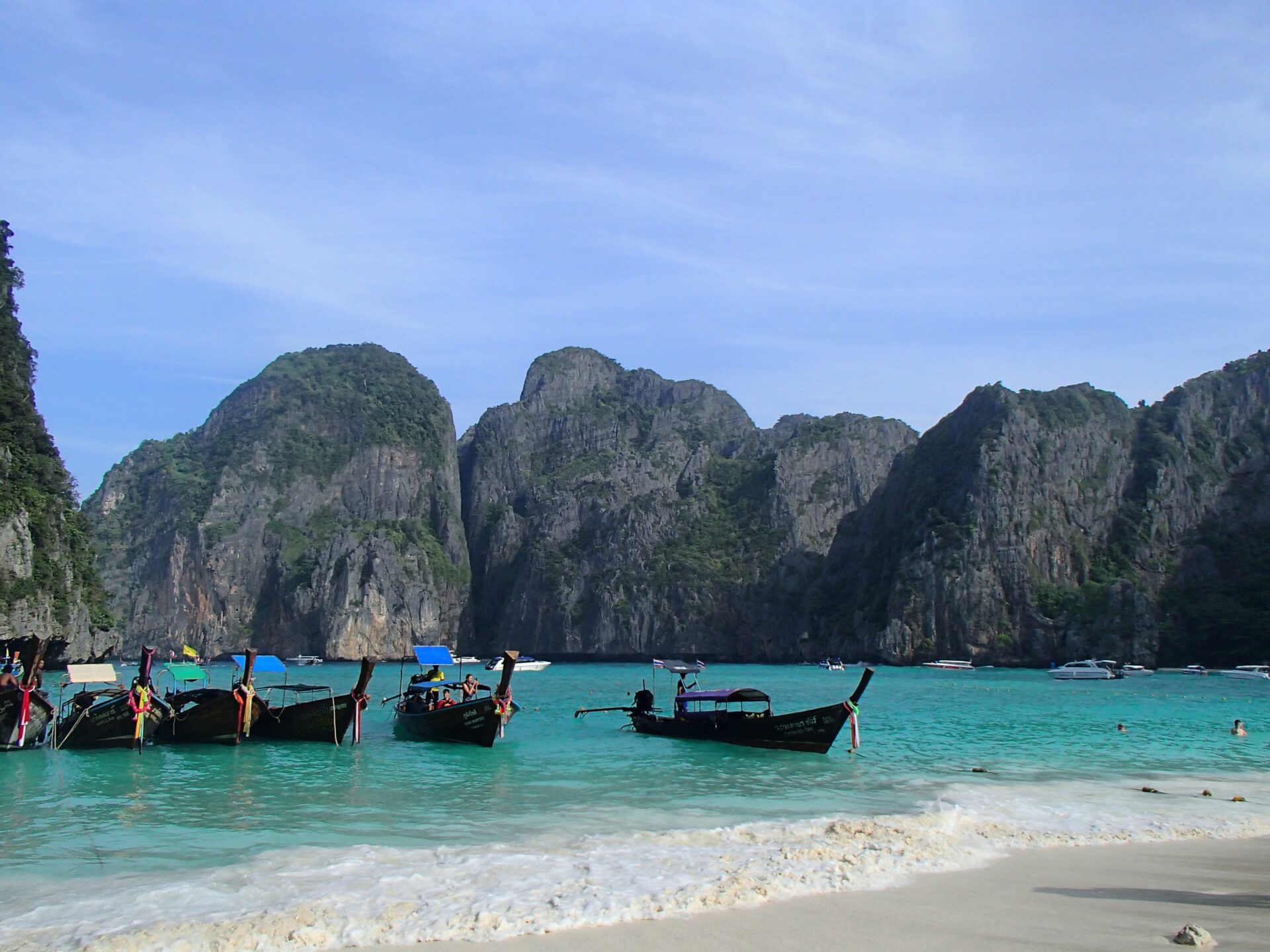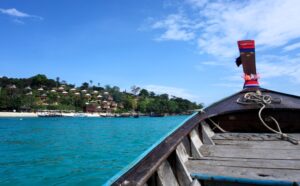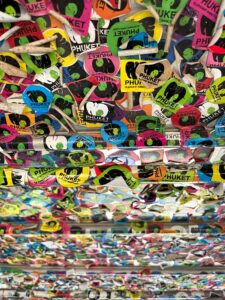Once you’ve decided to go to Thailand, the hardest part will be planning your itinerary. These posts focus more on our stay in Phuket, but if you are visiting the country for the first time, you should definitely include Bangkok and one of the islands to relax on the beach. On our first trip we chose the Phi Phi Islands as our last stop, and it was wonderful.
If you have more time, don’t miss the chance to explore the northern regions such as Chiang Mai and Chiang Rai.
You can find out more about each region of the country on Thailand’s official tourism website.
Another factor to consider when planning your trip is the time of year you’ll be travelling. Being a large country, Thailand is affected by both the summer and winter monsoons in different ways, depending on the region. The high season runs from November to February and is considered the best time to visit the country as there is less rainfall, and temperatures are moderate, ranging from 27°C to 31°C.
It’s always important to check the weather forecast for the region you´re planning to visit. For example, Phuket may not be the best option for a holiday during the European summer, as it’s very wet. However, the islands of Koh Samui, on the east coast, experience less rainfall in June and July, making them a better choice for a summer getaway. Here is a good summary of the expected weather for each region of Thailand, month by month. Our first trip to Thailand was in December, and we returned at the end of January on subsequent visits, each time with great weather.
An important tip for those planning to visit Thailand during Chinese New Year: make sure to book as far in advance as possible. This is one of the most popular travel periods in Asia, and prices increase significantly as the date approaches. Chinese New Year usually falls between late January and earl/mid February, so the earlier you book, the better your chances of getting good prices and a wider range of accommodation options.

Once you’ve decided where you want to go in Thailand, you can use SkyScanner to check available flights. I usually make my purchase directly on the airline’s website, taking into account price and the most convenient timetable.
On our first trip to Thailand, we flew from Bangkok to Chiang Rai with AirAsia, a low-cost airline that also sells flights from other airlines on its website. From Chiang Rai to Chiang Mai we took a bus, which I remember being quite comfortable. Then we took another domestic flight with AirAsia, this time from Chiang Mai to Phuket. In Phuket we caught a ferry to the Phi Phi Islands. For boat transport, I always recommend checking with the hotel where you’re staying, as they will know the transport options available and schedules.
In our most recent trip to Phuket, we flew with AirAsia, from Singapore to Phuket, and we used Scoot for the return trip.
For our next trip to Thailand, we’ll be staying in Ko Lanta, and we’ll be flying from Singapore to Krabi airport. If Ko Samui is your destination, there’s also the option of flying direct to Ko Samui airport.
Entry requirements for Thailand can be found here. As you can see here, there are currently 93 countries on the list of countries that do not require a visa to enter Thailand. As Portugal is on this list, we didn’t have to worry about getting a visa. You can go straight to immigration on arrival.
The only requirement is that your passport must be valid for at least 6 months.
From 1 May 2025, all visitors will be required to submit the digital arrival card — the TDAC (Thailand Digital Arrival Card) — online before their date of arrival.
The arrival card must be completed here up to three days before travel, and it replaces the old paper form that used to be handed out on arrival in Thailand. You can read the full article here.
As I’ve mentioned in previous posts, it’s very useful to check the Portal of the Portuguese Communities before travelling to a certain country. In addition to the generic information about the country, you can also find important contacts for Portuguese citizens, such as the Portuguese Embassy in Bangkok. There is also a section dedicated to health precautions, including recommended vaccinations and other alerts, such as pollution levels, for example.
If you’re not Portuguese, I recommend visiting the equivalent of the Portal of the Portuguese Communities in your own country, as you’ll likely find useful and up-to-date information for your trip.
As is common in other Southeast Asian countries, it’s important to remember that you shouldn’t drink tap water. Only drink bottled water and consume drinks with ice only when you are sure the ice was made with treated water. The same caution should be applied when brushing your teeth – avoid using tap water. For those traveling with children, it’s always a good idea to remind them of these precautions a few days before the trip.
Hotels usually provide drinking water and to be used for brushing your teeth, which is replenished daily in the rooms.
I always make sure I buy a mobile data pack before I travel, as it comes in handy when I need to find nearby restaurants or contact guides and hotels. I’ve been using Airalo, which allows you to buy mobile data packages via an eSIM. You simply download the app, create an account, select the country and data plan you want, pay and then install the eSIM. You can find out more details here. Also make sure your phone supports eSIM, which you can check here.
I also recommend exchanging some Baht (THB) before you travel or at the airport on arrival. Although many restaurants accept card payments, it is always useful to have cash on hand for street markets or the famous Thai massages on the beach.
Finally, one very important piece of advice: don’t forget to buy your health insurance before you go. If all goes well, you won’t need it, but in the event of an accident or illness, you’ll at least be covered.
Don’t miss my suggestions for your stay in Phuket:
*This post contains affiliated links, and if you make a reservation/purchase through them I may earn a small commission at no extra cost you.


